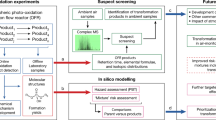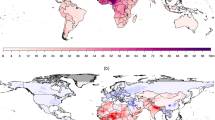Abstract
Paracelsus, the Renaissance figure often called the father of toxicology, is given that credit partly for being the first to note that “the dose makes the poison.” Modern understanding of the importance of personal exposure in determining dose, however, indicates that to a large extent as well, “place makes the poison.” The relative proximity of a pollution source to people has just as big an impact on its importance as a hazard as does the relative toxicity (including chemical nature and size distribution) of its emissions. The exposure effectiveness (or intake fraction) of common air pollution sources, for example, varies over nearly four orders of magnitude. A place-makes-the-poison perspective not only identifies new relationships and priorities among known sources, but also reveals an entirely new landscape of sources and potential control measures. It, thus, has profound economic and policy implications, which will be examined in the context of particle air pollution in different parts of the world.
This is a preview of subscription content, access via your institution
Access options
Subscribe to this journal
Receive 6 print issues and online access
$259.00 per year
only $43.17 per issue
Buy this article
- Purchase on Springer Link
- Instant access to full article PDF
Prices may be subject to local taxes which are calculated during checkout


Similar content being viewed by others
Notes
Stricly, exposure has been defined to refer to the contact of the contaminant at the interface of the appropriatepart of the body and the environment. See the excellent reviews of the exposure assessmentfield and associated terminology done in previous Wesolowski Lectures (e.g., Ott, 1995; Lioy, 1999).
Strictly, this is nominal or potential dose effectiveness, since it does not refer to the amount of material actually staying in the body (Lioy, 1990).
It has only been applied in other realms, fr example, in the relationship of greenhouse gas emissions to global warming (Smith and Ahuja, 1990).
Efforts are now being undertaken to standardize the terminology as “intake fraction” (Bennett et al., forthcoming).
As Lai et al. (2000) have shown, EE/DE is dependent on size of the particle. Thus, some of the apparent differences in toxicity of small particles from outside may be due to differences in EE/DE as well as the differences in respiratory system penetration/retention.
Of course, time, too, is a factor as the ED/DE of a class of sources will depend on the time of day they emit, as well as their location, because of the spatial distribution of person–hours over the day, week, and year.
This assumes that the equivalent EE/De of the monitoring station does not change with regard to the sources for which the EE/DE of the population changes. Since indoor sources hardly affect ambient monitoring stations, however, any shift of EE/DE for the population in regard to an indoor source is unlikely to be matched by a change in the EE/DE of the monitoring station in relation to that source.
A more technically precise term, which also has the advantage of including a temporal interpretation, would be “proximity” (Marshall et al., 2001). Given that the Paracelsus dictum is so widely known, however, there isan alliterative advantage to simply substitute “dose” with “place”.
References
Anonymous Remembering Paracelsus (1493–1541), Indian J Physiol Pharmacol (1993) 37: 169–170
Atkins S Goethe's Faust. Collier: New York 1962
Barnet S Christopher Marlowe's Doctor Faustus. Signet Books: New York 1969
Bennett DH Evans JS Margni MD McKone TE Nazaroff WW Riley W Smith KR Defining intake fraction, Environ Sci Technol (2002) 36 (in press)
Bernoulli R Paracelsus — physician, reformer, philosopher, scientist, Experientia (1994) 50: 334–338
Binswanger HC Smith KR Paracelsus and Goethe: founding fathers of environmental health, Bull WHO (2000) 78: 1162–1164
Borzelleca J Paracelsus: herald of modern toxicology, Toxicol Sci (2000) 53: 2–4
Colls JJ Micallef A New directions — towards better human exposure estimates for setting of air quality standards, Atmos Environ (1997) 31: 4253–4254
Curtiss PS Rabl A Impacts of air pollution — general relationships and site dependence, Atmos Environ (1996) 30: 3331–3347
Deishmann W Henschler D Holmsted B Keil G What is there that is not poison? A study of the Third Defense by Paracelsus, Arch Toxicol (1986) 58: 207–213
Evans JS Hattis D Thompson KM Exposure efficiency: concept and application to perchloroethylene exposure from dry cleaners, J Air Waste Manage Assoc (2000) 50: 1700–1703
Evans JS Wolff SK Phonboon K Levy JI Smith KR Exposure efficiency: an idea whose time has come?, Chemosphere (2002) (Forthcoming)
Feder G Paradigm lost: a celebration of Paracelsus on his quincentenary, Lancet (1993) 341: 1396–1397
Lai ACK Thatcher TL Nazaroff WW Inhalation transfer factors for air pollution health risk assessment, J Air Waste Manage Assoc (2000) 50: 1688–1699
Levy JI Hammitt JK Yanagisawa Y Spengler JD Development of a new damage function model for power plants: methodology and applications, Environ Sci Technol (1999) 33: 4364–4372
Lioy P Assessing total human exposure to contaminants: a multidisciplinary approach, Environ Sci Technol (1990) 24: 938–945
Lioy PJ The 1998 ISEA Wesolowski Award Lecture — exposure analysis: reflections on its growth and aspirations for its future, J Expos Anal Environ Epidemiol (1999) 9: 273–281
Marshall J Riley W McKone T Nazaroff W Exposure to motor vehicle emissions: the intake fraction approach In International Society for Exposure Analysis. Rayleigh, NC 2001
Ott WR Human exposure assessment: the birth of a new science, J Expos Anal Environ Epidemiol (1995) 5: 449–472
Pachter H Magic Into Science: The Story of Paracelsus. Henry Schuman: New York 1951
Phonboon K Risk Assessment of Environmental Effects in Developing Countries Ph.D. ThesisHarvard University, Boston 1996
Rabl A Spadaro JV Public health impact of air pollution and implications for the energy system, Annu Rev Energy Environ (2000)
Roumasset JA Smith KR Exposure trading — an approach to more efficient air pollution control, J Environ Econ Manage (1990) 18: 276–291
Rowe M NO2 exposure from vehicles and stoves, J Transp Eng (1985) 111: 679–691
Rozman K Doull J Dose and time as variables of toxicity, Toxicology (2000) 144: 169–178
Smith KR Biofuels, Air Pollution, and Health: A Global Review. Plenum, New York 1987
Smith KR Total exposure assessment: Part 1. Implications for the US, Environment (1988) 30: 10–15 33–38
Smith KR Total exposure assessment: Part 2. Implications for developing countries, Environment (1988) 30: 16–20 28–35
Smith KR Fuel combustion, air pollution exposure, and health: the situation in developing countries, Annu Rev Energy Environ (1993) 18: 529–566
Smith KR The Potential of Human Exposure Assessment for Air Pollution Regulation WHO/EHG/95.9 Rep. No. WHO/EHG/95.9 World Health Organization, Geneva 1995
Smith K Ahuja D Toward a greenhouse equivalence index: the total exposure analogy, Clim Change (1990) 17: 1–7
Smith KR Edgerton SA Exposure-based air pollution control strategies: proposed three-way integration In Symposium on Total Exposure Assessment Methodology (1989) 16: 630–641 EPA/AWMA, Las Vegas
Tsai FC Total Exposure and Significant Source Assessment: The Relationships Among Emission Sources, Concentrations, and Health Effects of Particulate Matter PhD ThesisUniversity of California, Berkeley 1999
Tsai FC Apte MG Daisey JM An exploratory analysis of the relationship between mortality and the chemical composition of airborne particulate matter, Inhalation Toxicol (2000) 12: 121–135
Valberg PA Watson AW Alternate hypotheses linking outdoor particulate matter with daily morbidity and morality, Inhalation Toxicol (1998) 10: 641–662
Webster C Paracelsus: and 500 years of encouraging scientific inquiry, Br Med J (1993) 306: 597–598
Wesolowski J The relation between policy and research planning, J Expos Anal Environ Epidemiol (1991) 1: 1–10
WHO Environment and Health in Sustainable Development. World Health Organization, Geneva 1997
Zartarian VG Ott WR Duan N A quantitative definition of exposure and related concepts, J Expos Anal and Environ Epidemiol (1997): 7(4): 441–437
Author information
Authors and Affiliations
Rights and permissions
About this article
Cite this article
SMITH, K. Place makes the poison: Wesolowski Award Lecture — 1999. J Expo Sci Environ Epidemiol 12, 167–171 (2002). https://doi.org/10.1038/sj.jea.7500219
Received:
Published:
Issue Date:
DOI: https://doi.org/10.1038/sj.jea.7500219
Keywords
This article is cited by
-
Domestic Burning of Fuelwood in a Subsistence Tribal Economy of Lower Himalayas, India: Some Implications Based on Exploratory Analysis
Small-scale Forestry (2012)
-
For good measure: Origins and prospects of exposure science (2007 Wesolowski Award Lecture)
Journal of Exposure Science & Environmental Epidemiology (2010)
-
Exposure opportunity models for Agent Orange, dioxin, and other military herbicides used in Vietnam, 1961–1971
Journal of Exposure Science & Environmental Epidemiology (2004)



